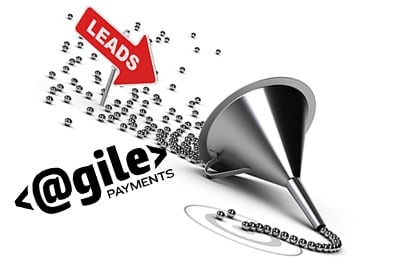What does it take to drive sales through your sales funnel? Almost every SaaS company we provide ACH Integration to offers free trials to drive sales and to promote and gain new customers. Almost every SaaS company we provide ACH Integration to offers free trials to drive sales and to promote and gain new customers.
 There’s an excellent chance that you yourself are already spending thousands of dollars to drive leads to your free trial offer in order to grow your customer base.
There’s an excellent chance that you yourself are already spending thousands of dollars to drive leads to your free trial offer in order to grow your customer base.But…
Is Offering a Free Trial Enough?
Like many other SaaS providers you are probably learning, however, that a free trial on its own isn’t enough to find and acquire new customers for your business.
If that’s the case don’t beat yourself up over it. There are definitely steps you can take to make your free trials more effective.
What can you do to leverage the power of your free trial offer?
Plenty.
Read on to find out what…
Introducing Cohort Analysis
Cohort analysis is a new technique of analyzing customer behaviors, as suggested by Nick Franklin of ChartMogul in his growth-hacking course.
 Once your trial customer does commit to continuing with your software, you should further analyze the impact of the free-trial marketing with the customer in order to keep them as a customer.
Once your trial customer does commit to continuing with your software, you should further analyze the impact of the free-trial marketing with the customer in order to keep them as a customer.But how do you use cohort analysis to your advantage to gain and keep the best customers who will be loyal to your product?
Here are some tips to help you get started:
How to Use Cohort Analysis in Your Sales Funnel
First of all, it’s important to keep in mind that the 80/20 rule applies here.
So what is the key to getting and maintaining customers who are going to continue to want to use your product for the long haul?
One key is to know what they want by using a sophisticated data-gathering method.
 The Key to Customer Retention
The Key to Customer Retention
Since it takes about a full calendar year to recoup losses from customer acquisition costs, you need to have as your target goal to go beyond that period of time if you plan on turning any type of profit.
With this in mind, it is crucial for you to do what is necessary to figure out what your potential customers really want out of your service.
Will your software solution be able to answer these questions or solve these problems for them later on down the road?
If so, how will you create this perceived value in the minds of the trial users before their trial runs out?
Analysis Creates Revenue
As business owners we need to be constantly alert to changes in customer interests, behaviors, and sign-ups of various trial users.
 Aristotle once said, “The unexamined life is not worth living.” Similarly, any business that is not analyzed in terms of what is going on regarding customer retention and drop-off rates, churn, and other related factors, will not pay off for the owner of that business.
Aristotle once said, “The unexamined life is not worth living.” Similarly, any business that is not analyzed in terms of what is going on regarding customer retention and drop-off rates, churn, and other related factors, will not pay off for the owner of that business.Factors such as device type (the device the customer was using at the time of sign-up), as well as the user language, and other factors, often help give a clearer picture of how a customer thinks and what they are likely to want from you in the future.
Other factors such as the time of day which they downloaded your software, the level of engagement they illustrated during the process, and any other behavioral factors you can pinpoint may help to get into the minds of your customer.
How to Use Buyer Personas to Kick Ass and Take Names
One of the main keys to analyzing customer behaviors during the trial period and beyond is to get into their heads and learn their “pain points,” learn what motivates them to take action, and what is likely to sway their opinion in the future.
 There’s no better way than using buyer personas to get your free trials dialed in to the needs of your customers. So use them!
There’s no better way than using buyer personas to get your free trials dialed in to the needs of your customers. So use them!The truth is, people will pay for something if it is truly worth it to them. So what makes it worth it to them? How do you get into your buyers’ heads?
Using the Communications Features to Learn More
Some SaaS businesses miss the entire point when running free trials. They, in essence, forget to use their own software for the purposes for which it was intended!
That is, they don’t use all of the capabilities to their fullest advantage.
For example, many businesses fail to communicate with their trial users during the trial period to see how they are enjoying the application. But without customization, it falls short of their expectations.
You need to make customers feel this is the software solution for them. And how will you know that without using the messaging and communications features of your system to find out what they are thinking?
Examples of Cohort Analysis
 A good example of cohort analysis is adjusting your product during the free trial period to fit their needs, based on their business goals.
A good example of cohort analysis is adjusting your product during the free trial period to fit their needs, based on their business goals.
Are you tuned in to the needs of your customers? Are you sure?
For example, someone with limited experience in ecommerce may have as one of their pain points a lack of knowledge in how to drive sales to their ecommerce website. So you could think about how your software could help them with this and suggest this in an email message to them.
If you know the person is a savvy business person, why not send them a message about specific analytical reports your software allows them to run on their sales and marketing goals?
By keying in specifically to the individual needs of the user, you begin to get them to connect more to the product, and give them a reason to continue using your application long after their trial period has ended.
Perceived Value vs. Real Value
 Perceived value is not the same as real value.
Perceived value is not the same as real value.
Real value refers to the actual monetary value you might place on a certain thing on the market. Perceive value is the amount of value the CUSTOMER places on it personally, based on whether or not it directly addresses his needs at the time of purchase.
This is why it is so important to address any issues they have during the trial period to make sure you convince them that your software will solve their problems.
Adding Value
The best thing you can do to add value to your software service or product is to show them how you are meeting their specific needs and how you have made their lives better than they were without your software.
Adding value means to educate the potential long-term client about all of the ways your software can help them.
The main point Lincoln Murphy makes about effective use of cohort analysis is to put the emphasis on the potential customer and make it about meeting their needs, thereby increasing the level of perceived value in the minds of the customer for your product.
 The Final Analysis
The Final Analysis
During the free trial, if you have done your job correctly, you have focused on gathering data about the needs of the customer, communicated with them about what their “pain points” are, and devised a plan to try to meet their needs and increase value in their eyes.
Now, it’s time to analyze the results.
This involves a more in-depth analysis and look at the marketing efforts you have done in order to gain such customers, as well as other factors.
Other Factors to Consider Include:
- Conversion Rate of free trial-to-paid conversions by persona
- MRR generated by free trial by persona
- MRR churn levels by persona
- Customer churn levels by persona
- Lifetime value vs. CAC by persona
- Free trial-sales efficiency by persona
More About Cohort Analysis
Think of cohort analysis as the “secret intelligence agency” of the virtual world.
It is a tactic that is working behind the scenes while your customer tries out your product. It is almost like a dating game between your company and your product and your potential lifelong customer.
While it’s true that people sometimes shift from one product to another in a “try this, try that” modality, the key is help them realize that they can stop looking by staying with your product.
So customization of the experience on your customer’s level and from their perspective will go a long way toward creating the kind of loyalty you want in your customer base.
Reason For Customer Loyalty
According to one source, the #1 reason for customer loyalty is customer service.
 With this in mind, not only do you need to use the techniques involved in cohort analysis for the purpose of gaining information, but also as a way to meeting your customer where they are and trying to solve their specific problems and pain points using the system that you are wanting to sell them on.
With this in mind, not only do you need to use the techniques involved in cohort analysis for the purpose of gaining information, but also as a way to meeting your customer where they are and trying to solve their specific problems and pain points using the system that you are wanting to sell them on.
Adding Lifetime Value to Your Products
In the final analysis, it is important to keep in mind that potential customers have a very distinct idea about how they want to use your software product in their own business even before they sign up for your trial. So once they have done so, it should be considered your job to see that their needs are met.
 Communicate with customers and ask them how you could improve your product for them and others over time. Remembering the key is to keep good customers for life, not just a few days beyond the trial period is key here.
Communicate with customers and ask them how you could improve your product for them and others over time. Remembering the key is to keep good customers for life, not just a few days beyond the trial period is key here.Customer loyalty is built over months, not days, over years, not months, much in the same way that relationships are built, kept, and nurtured for the future.
Find the ways you can please these customers and make them want to stay on board for the long haul and you will not only win the day, increase your revenue, and increase your bottom line, but you will create a customer and a brand evangelist at the same time.
It is only by utilizing cohort analysis, which is the SaaS equivalent to “Lean UX” in the GUI development world, that you will truly learn and understand the needs of your potential customers and turn a one-time customer into a fan for life.


 The Key to Customer Retention
The Key to Customer Retention